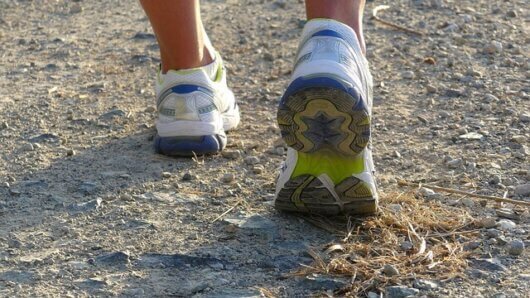Plyometrics is a type of exercise that focuses on explosive movements to build power, speed, and agility. It involves rapid stretching and contracting of muscles, often using jumping, bounding, and hopping motions. The goal is to improve muscle strength and responsiveness, making it popular among athletes and fitness enthusiasts.
KEY BENEFITS OF PLYOMETRICS:
Increases power – Helps muscles generate force quickly, improving athletic performance.
Boosts speed and agility – Essential for sports like basketball, soccer, and track.
Enhances coordination and balance – Helps with overall movement efficiency.
Improves cardiovascular endurance – Engages multiple muscle groups, making it a great workout.
COMMON PLYOMETRIC EXERCISES:
Box jumps
Jump squats
Burpees
Lateral bounds
Clap push-ups
Plyometric training is intense and should be done with proper form to prevent injury.
Plyometrics originated in the Soviet Union in the 1960s and 1970s, primarily through the work of Dr. Yuri Verkhoshansky, a Russian sports scientist. He initially referred to it as “shock training,” as it involved sudden, explosive movements designed to improve athletic power.
Key Historical Developments:
1960s – Verkhoshansky observed that athletes who performed jump training improved their speed and strength significantly.
1970s – The method was introduced to Western countries, especially after U.S. track and field coach Fred Wilt coined the term “plyometrics” from the Greek words “plio-“ (more) and “metric” (measure).
1980s & Beyond – Plyometrics gained widespread popularity, particularly in sports like basketball, soccer, and football, where explosive power is crucial.
Today, plyometric training is used across various sports and fitness programs to develop speed, agility, and overall athletic performance.
PLYOMETRICS IS WIDELY USED IN VARIOUS SPORTS TO ENHANCE EXPLOSIVE POWER, SPEED, AND AGILITY. HERE’S HOW DIFFERENT SPORTS INCORPORATE PLYOMETRIC TRAINING:
BASKETBALL 🏀
Focus: Jumping ability, agility, and quick directional changes.
Exercises:
Box jumps (for vertical leap improvement)
Depth jumps (to enhance explosive takeoff)
Lateral bounds (for agility and side-to-side movement)
SOCCER ⚽
Focus: Sprinting speed, agility, and leg strength for kicking and jumping.
Exercises:
Bounding drills (for sprint acceleration)
Hurdle hops (to develop quick footwork and balance)
Single-leg hops (to improve stability and power for shooting)
FOOTBALL (AMERICAN FOOTBALL) 🏈
Focus: Explosive starts, tackling power, and quick cuts.
Exercises:
Broad jumps (for explosive sprint starts)
Medicine ball slams (for core power)
Clap push-ups (to develop upper-body explosiveness for blocking and tackling)
TRACK & FIELD (SPRINTING, LONG JUMP, HIGH JUMP, HURDLES) 🏃♂️
Focus: Acceleration, takeoff power, and endurance.
Exercises:
Bounding strides (to lengthen and strengthen running strides)
Hurdle jumps (for rhythm and explosive leg drive)
Drop jumps (to maximize quick ground contact for sprinting)
VOLLEYBALL 🏐
Focus: Vertical jump height for spiking and blocking.
Exercises:
Depth jumps (to improve reactive jump power)
Tuck jumps (for explosive jumping endurance)
Lateral box jumps (for quick defensive reactions)
TENNIS 🎾
Focus: Quick footwork, lateral movement, and reaction speed.
Exercises:
Skater jumps (to improve side-to-side movement)
Split squat jumps (for explosive returns)
Plyometric push-ups (for upper-body strength in serves and volleys)
BASEBALL/SOFTBALL ⚾
Focus: Explosive throwing, batting power, and quick base running.
Exercises:
Medicine ball rotational throws (for swing and throw power)
Sprint-bound drills (to improve running acceleration)
Single-leg depth jumps (to build lower-body power for explosive movement)
Plyometric training is widely used in almost every sport requiring power and speed.
HERE’S A BEGINNER-FRIENDLY PLYOMETRIC ROUTINE TO HELP YOU BUILD EXPLOSIVE POWER, SPEED, AND AGILITY. THIS ROUTINE FOCUSES ON LOWER BODY, UPPER BODY, AND CORE STRENGTH, WITH SIMPLE BUT EFFECTIVE MOVEMENTS.
Beginner Plyometric Routine (3 Rounds)
Perform each exercise for 30 seconds, rest 30 seconds, and complete 3 rounds with a 2-minute rest between rounds.
Squat Jumps (Lower Body)
Stand with feet shoulder-width apart, squat down, and explode upward.
Land softly and repeat.
Benefit: Improves lower-body power and jump height.
Skater Jumps (Agility & Lateral Power)
Jump laterally from one foot to the other like a speed skater.
Keep your landing soft and controlled.
Benefit: Enhances side-to-side quickness for sports like tennis and basketball.
Plyometric Push-Ups (Upper Body Power)
Start in a push-up position, lower yourself, then push up explosively so your hands leave the ground.
Land softly and repeat.
Modification: Do this from your knees if needed.
Benefit: Builds explosive chest, shoulder, and tricep strength.
Bounding (Sprint Power)
Take exaggerated running strides, jumping forward with each step.
Focus on driving your knees high and landing softly.
Benefit: Boosts sprinting acceleration and leg power.
Medicine Ball Slams (Core & Upper Body)
Lift a medicine ball overhead, then slam it into the ground forcefully.
Pick it up quickly and repeat.
Benefit: Strengthens the core, shoulders, and arms explosively.
Tuck Jumps (Total Body)
Jump straight up while bringing your knees to your chest.
Land softly and reset before the next jump.
Benefit: Increases lower-body power and endurance.
Cool Down (5-10 Minutes)
Light jogging or walking
Stretching (focus on legs, arms, and core)
This routine helps you gradually build explosiveness while reducing injury risk.
YOU CAN INTEGRATE PLYOMETRICS INTO YOUR REGULAR WORKOUT AND JOGGING ROUTINE. SINCE PLYOMETRIC EXERCISES ARE HIGH-INTENSITY, THEY WORK BEST WHEN PLACED STRATEGICALLY WITHIN YOUR SCHEDULE TO AVOID OVERTRAINING AND REDUCE INJURY RISK. HERE’S HOW YOU CAN INCORPORATE THEM EFFECTIVELY:
Option 1: Plyometrics on Strength Training Days
Do plyometrics before weightlifting when your muscles are fresh.
Example: Before a leg workout, perform squat jumps and bounding to activate explosive power.
For upper-body days, include plyometric push-ups or medicine ball slams before lifting.
Option 2: Plyometrics on Jogging Days
Perform a short plyometric session before jogging to activate fast-twitch muscle fibers.
If your focus is endurance, keep plyometric volume low to avoid fatigue.
Example: Do skater jumps, tuck jumps, and bounding before a run.
Option 3: Separate Plyometric Day
Dedicate one or two days a week to plyometrics.
Example:
Warm-up with light jogging.
Perform a full-body plyometric workout (the routine I shared earlier).
Finish with a cool-down walk and stretching.
Guidelines to Avoid Overtraining
Limit plyometrics to 2-3 times per week.
Take rest days between intense sessions. Avoid doing plyometrics the day after heavy leg training.
Listen to your body. If your joints feel sore or fatigued, give them time to recover.
Plyometrics, when done consistently, can lead to noticeable improvements in athletic performance, strength, and coordination. One of the biggest benefits of plyometric training is its ability to enhance explosive power by training the fast-twitch muscle fibers responsible for quick, powerful movements.
Over time, you may notice that you can sprint faster, jump higher, and react more quickly to changes in direction. This carries over to many sports, as well as daily activities that require balance and agility.
Additionally, plyometrics improve neuromuscular coordination, helping your brain and muscles work together more efficiently, which can reduce the risk of injury.
Another key adaptation that occurs with consistent plyometric training is increased tendon and ligament strength. The repeated explosive movements put stress on the connective tissues, prompting them to adapt and become stronger.
This can be particularly useful for reducing injury risk in high-impact sports like basketball, soccer, or running. However, because plyometrics involve high-impact forces, it’s essential to progress gradually and use proper form to prevent excessive strain on the joints.
You may feel some initial soreness as your muscles and joints adapt, but this should lessen over time as your body gets stronger.
Plyometrics can be adapted for people of all ages, but how they are performed should depend on individual fitness levels. Young athletes can benefit from plyometrics to develop coordination and athleticism, while older adults can use lower-impact variations, such as step-ups or controlled bounding, to improve strength and balance.
Proper warm-ups, progression, and recovery are key, especially for those who are new to explosive movements. If you consistently incorporate plyometrics into your routine while balancing it with strength training and jogging, you can expect improved endurance, better muscle tone, and an overall increase in functional athletic ability.
Plyometrics is one of the most effective ways to build explosive power, speed, and agility, making it a valuable addition to any fitness routine. Whether your goal is to improve athletic performance, enhance muscle endurance, or simply challenge yourself with a new form of training, plyometrics offers a dynamic and engaging way to push your limits.
Unlike traditional strength training, which focuses on controlled movements, plyometrics emphasizes rapid force production, which can help you move more efficiently and powerfully in both sports and daily activities.
Another reason to try plyometrics is its versatility. You don’t need expensive equipment or access to a gym to perform these exercises—many plyometric movements use only your body weight, making them easy to incorporate anywhere.
Whether you are jogging, lifting weights, or doing general fitness training, plyometrics can complement your routine by improving coordination, reaction time, and overall movement efficiency. Over time, you’ll likely notice increased strength in your legs and core, better balance, and a higher energy level during workouts.
Ultimately, adding plyometrics to your routine can help you become a stronger, faster, and more resilient version of yourself. While it requires effort and consistency, the benefits are well worth it, and you may even find it to be a fun and rewarding challenge. If you’re looking for a way to break through plateaus, improve your athletic ability, or simply take your fitness to the next level, plyometrics is definitely worth trying.
THERE ARE SEVERAL GREAT SOURCES WHERE YOU CAN LEARN MORE ABOUT PLYOMETRICS, INCLUDING ITS BENEFITS, PROPER FORM, WORKOUT ROUTINES, AND HOW TO INTEGRATE IT INTO YOUR FITNESS REGIMEN. HERE ARE SOME PLACES TO EXPLORE:
Books & Research-Based Resources
- “Jumping Into Plyometrics” by Donald Chu – A well-regarded book that breaks down plyometric training for different sports and fitness levels.
- “The Essentials of Strength Training and Conditioning” by the NSCA (National Strength and Conditioning Association) – Covers the science behind plyometric training and how to implement it effectively.
- PubMed & Research Journals – Searching for “plyometric training benefits” on PubMed.gov or Google Scholar can provide scientific studies on its effectiveness and safety.
Online Courses & Training Websites
- NSCA (National Strength and Conditioning Association) & NASM (National Academy of Sports Medicine) – These organizations offer evidence-based information and certifications related to strength and plyometric training.
- YouTube Channels – Channels like Jeff Nippard, Athlean-X, and Squat University often provide expert breakdowns of plyometric techniques with demonstrations.
- ExRx.net – A comprehensive exercise library that includes detailed descriptions of plyometric exercises.
Fitness Coaches & Personal Trainers
- If you’re in a gym setting, many certified trainers can provide guidance on form and progression to prevent injury.
- Some sports performance centers specialize in plyometric training for athletes.
Practical Experience & Observation
- Watching athletes who rely on explosiveness (like sprinters, basketball players, or volleyball players) can give you insights into how plyometrics is used in real life.
- Trying out different exercises yourself and gradually progressing is one of the best ways to understand how it impacts your body.















